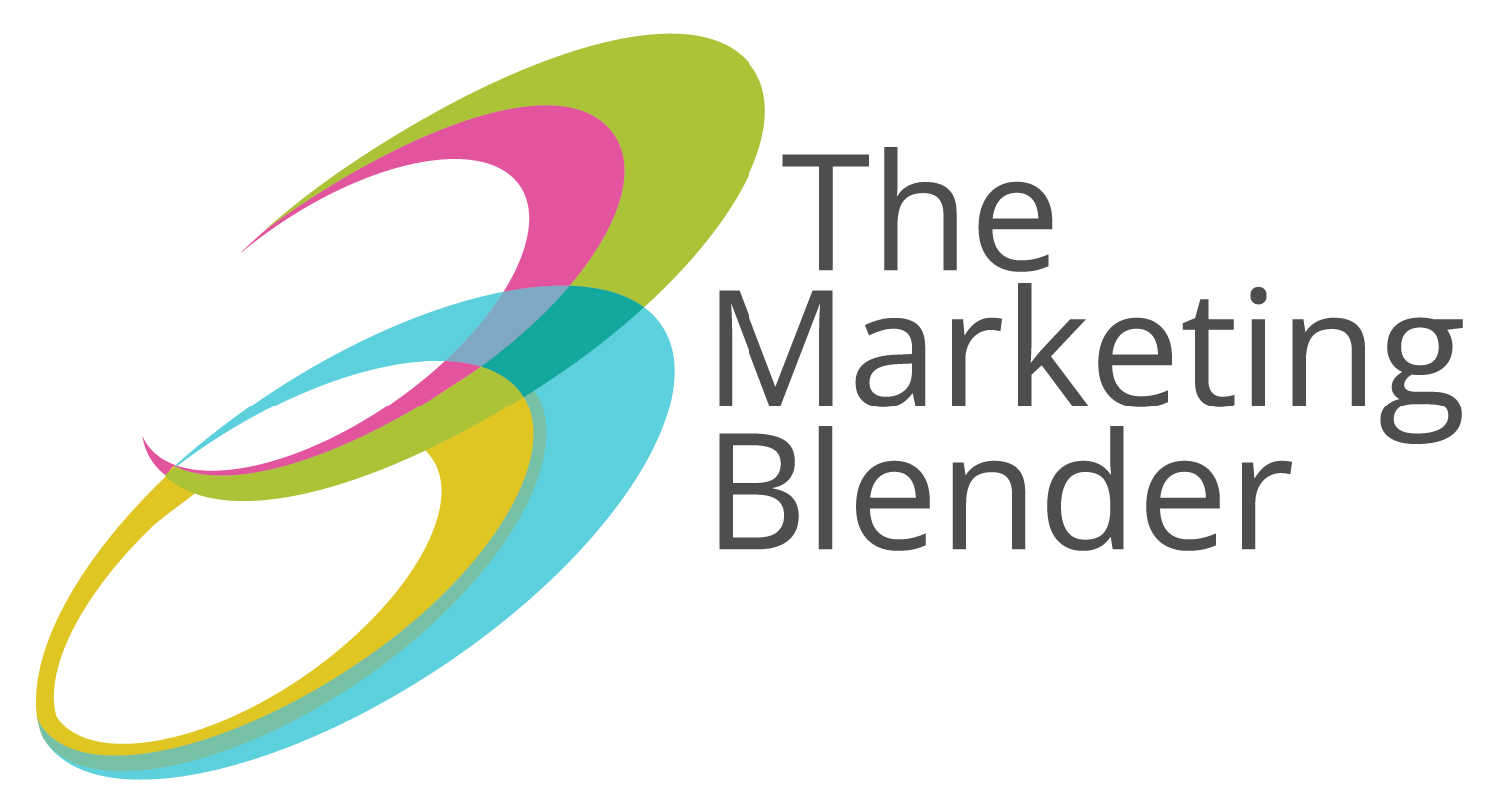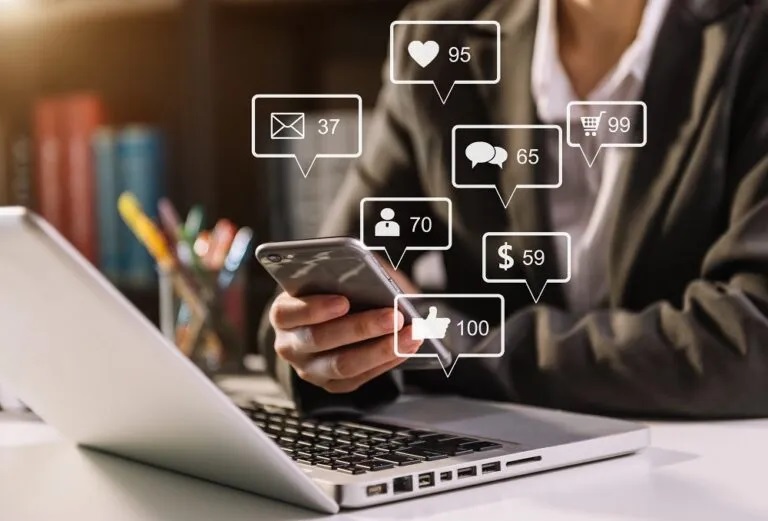B2B buyers are changing the way they make purchasing decisions. Research shows that buyers are as much as 85% of the way through their decision-making process before ever talking to a salesperson. That means your B2B content marketing funnel is doing the heavy lifting in the sales process, setting the table for whether or not your business even gets considered.
Why Content Marketing Is Important for B2B
“Content marketing is critical because it’s setting the table for did you even get a seat at the table? Like either the deck is set in your favor, stacked in your favor or it’s not.” – Dacia Coffey, Blender CEO
With that in mind, your B2B marketing funnel needs to be structured to guide potential buyers from initial awareness to final purchase—and even beyond to referrals and advocacy. If your content isn’t aligned with the buyer’s journey, you’ll struggle to generate leads and move prospects toward conversion.
The Purpose of Each Type of Content in Your B2B Content Marketing Funnel
Your content isn’t just about generating clicks—it should serve a clear purpose in your marketing funnel. There are four primary roles and goals for content:
- Awareness Content – Helps potential buyers recognize their problem and become aware of your solution.
- Trust-Building Content – Builds credibility and helps prospects see you as a specialist in their space.
- Closing Content – Gives buyers confidence to take the final step and make a purchase.
- Referral Content – Keeps you top of mind, making it easy for customers to spread the word about you.
“You have to think about content in terms of role and goal. If it’s not serving a purpose in the buyer’s journey, then it doesn’t belong in your marketing funnel.” – Daisy McCarty, Blender CMO
Without a structured funnel that moves buyers through these four stages, content marketing will feel random, disconnected, and ineffective.
Want to watch our episode on this topic? Catch it on The Marketing Blender Show.
The Types of Content You Need in a B2B Funnel
Each stage of the buyer’s journey requires different types of content. Let’s explore what works best for each role.
1. Awareness Content: Grabbing Attention & Educating
The first step in your funnel is getting noticed. Buyers are researching their problems before they ever think about a solution, so your content should educate first, sell later.
- Advertising Campaigns: Paid ads (LinkedIn, Google, industry publications) help put your brand in front of the right people.
- Short-Form Content: Blog posts, LinkedIn posts, and social media updates should be concise, engaging, and problem-focused.
- Visual Content: Infographics and data visualizations make complex ideas easier to digest.
- Polls & User-Generated Content (UGC): Get potential buyers engaged and interacting with your brand.
“There are two types of awareness content—awareness about their problem and awareness that you can solve it. You need both.” – Dacia Coffey, Blender CEO
Key Tip: Awareness content is not about selling—it’s about educating and engaging. Keep it short, scannable, and easy to consume.
2. Trust-Building Content: Establishing Credibility
Once buyers know about you, they need to trust that you’re the right solution. At this stage, your content should prove your expertise and make it easy for prospects to engage deeper.
- Case Studies & Testimonials: Show before-and-after results, customer success stories, and metrics that prove ROI.
- Market Research & Industry Insights: Proprietary reports and data-backed insights make you a credible authority.
- Educational Content: Webinars, courses, and thought leadership articles position you as the expert to follow.
- Email Nurture Sequences: Personalized email campaigns keep you top of mind and nurture leads over time.
“Trust-building content asks prospects to spend time with you. It should make them feel like they’re learning something valuable from you.” – Dacia Coffey, Blender CEO
Key Tip: Use a mix of written, video, and interactive content to build trust. Buyers have different preferences—give them options.
3. Closing Content: Removing Fear & Driving Decisions
When a prospect is ready to buy, your content should remove friction, build confidence, and provide clear next steps.
- ROI Calculators & Pricing Comparisons: Help buyers justify the investment.
- Product Demos & Free Trials: Let prospects experience the value of your solution before they buy.
- Sales-Enabled Content: Proposal decks, competitor comparisons, and FAQ documents address final objections.
- Chatbots & AI Assistants: Provide instant answers and guide buyers toward a decision.
“Closing content is all about giving the buyer confidence to move forward. Remove the fear, remove the doubt, and make the decision easy.” – Daisy McCarty Blender CMO
Key Tip: Buyers don’t want to “figure things out” alone—your content should make it easy to say yes.
4. Referral Content: Keeping Customers Engaged Post-Sale
Your funnel doesn’t end when the sale is made. If you want repeat business and word-of-mouth referrals, you need content that keeps customers engaged.
- Customer-Only Content: Exclusive webinars, training materials, or “pro tips” help customers get more value.
- Community & Networking Groups: Private LinkedIn groups or forums allow customers to connect and engage.
- Loyalty & Upsell Content: Email campaigns introducing new features, upgrades, and additional services.
- Encouraging Reviews & Referrals: Incentivize customers to share their experience.
“Referral content is what makes you shareable. It keeps you top of mind and makes people want to spread your message.” – Daisy McCarty Blender CMO
Key Tip: Make it easy for customers to refer you by giving them content worth sharing.
Final Tips for Optimizing Your B2B Content Funnel
If you’re not seeing strong results from your content, ask yourself:
- Does every piece of content have a clear purpose in the funnel?
If not, refine your strategy so each content type guides buyers forward. - Are you creating enough touchpoints?
The “7-11-4 Rule” proposed by author Daniel Priestly (Oversubscribed) suggests that buyers need seven hours of content across four platforms with 11 touchpoints before making a decision. That’s actually pretty accurate. - Are you tracking engagement and refining your approach?
Use tools like Google Analytics, HubSpot, and LinkedIn analytics to see what’s working and optimize accordingly.
“Buyers want to consume content before they talk to a salesperson. Marketing content is what’s taking them 85% of the way through the buying journey.” – Daisy McCarty Blender CMO
That means your content strategy isn’t just “nice to have”—it’s doing most of the selling for you. If your content isn’t converting, you aren’t getting the full benefits from your B2B content marketing funnel, it’s time to reassess your content strategy and make sure it aligns with the buyer’s journey.
Looking for expert guidance to build a high-performing B2B content funnel? Contact The Marketing Blender and let’s create a strategy that drives real results!



